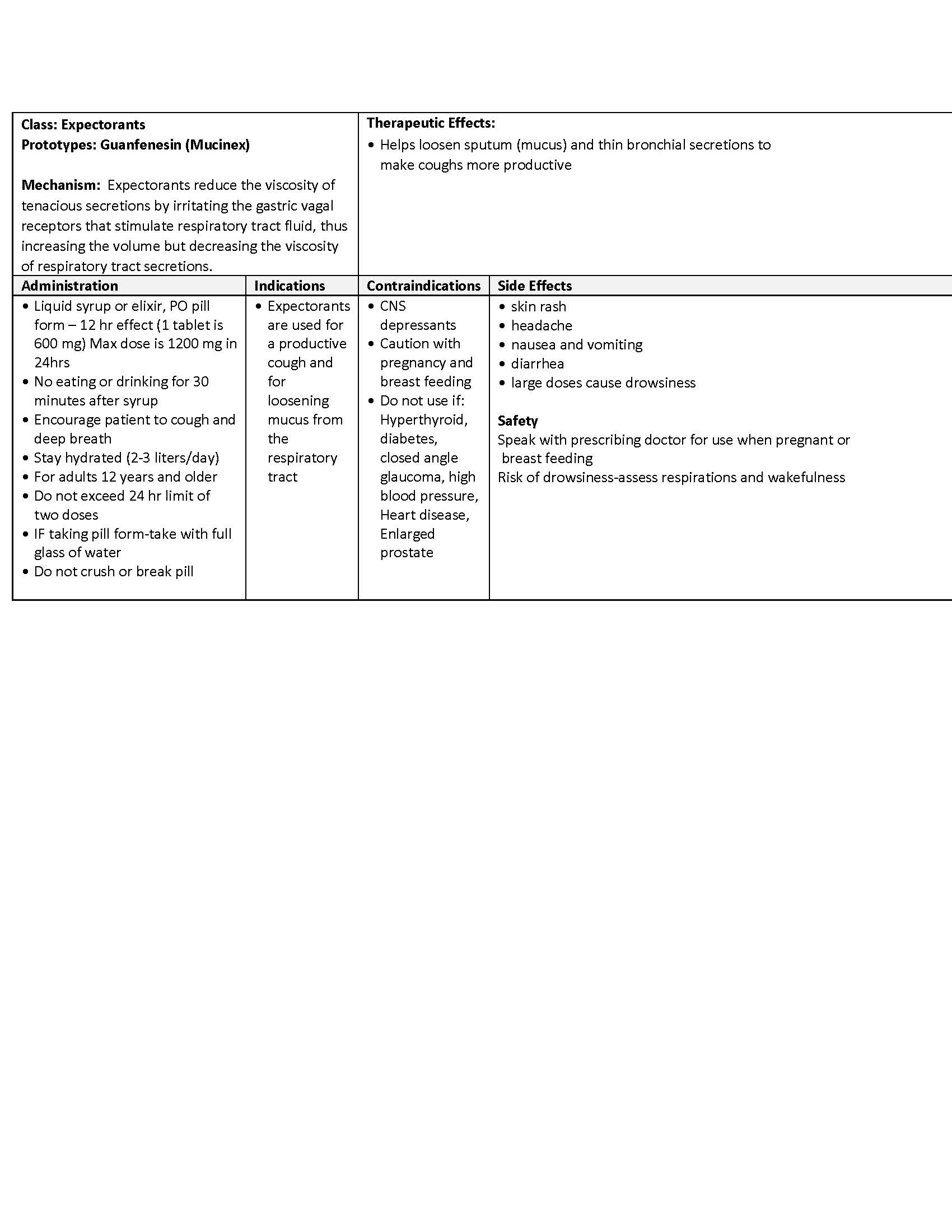Gas Exchange
5.9 Expectorants
Open Resources for Nursing (Open RN)
Expectorants
Guaifenesin (Mucinex) is an example of an expectorant.
Mechanism of Action
Expectorants reduce the viscosity of tenacious secretions by irritating the gastric vagal receptors that stimulate respiratory tract fluid, thus increasing the volume but decreasing the viscosity of respiratory tract secretions.
Indication for Use
Expectorants are used for a productive cough and for loosening mucus from the respiratory tract.
Nursing Considerations Across the Lifespan
The medication is safe for all ages. Guaifenesin is only recommended for use during pregnancy and breastfeeding when the benefit outweighs the risk.
Adverse/Side Effects
Guaifenesin may cause a skin rash, headache, nausea, and vomiting.[1]
Client Teaching & Education
Clients should take care to avoid irritants that stimulate their cough. Additionally, the medication can cause drowsiness. Clients should avoid taking them with other CNS depressants or alcohol.[2]
Now let’s take a closer look at the medication card for guaifenesin in Table 5.9.[3],[4],[5]
Table 5.9 Guaifenesin Medication Card

Media Attributions
- expectorants
- Frandsen, G. & Pennington, S. (2018). Abrams’ clinical drug: Rationales for nursing practice (11th ed.). Wolters Kluwer. ↵
- uCentral from Unbound Medicine. https://www.unboundmedicine.com/ucentral ↵
- This work is a derivative of Pharmacology Notes: Nursing Implications for Clinical Practice by Gloria Velarde licensed under CC BY-NC-SA 4.0. ↵
- Frandsen, G. & Pennington, S. (2018). Abrams’ clinical drug: Rationales for nursing practice (11th ed.). Wolters Kluwer. ↵
- This work is a derivative of Daily Med by U.S. National Library of Medicine in the public domain. ↵

